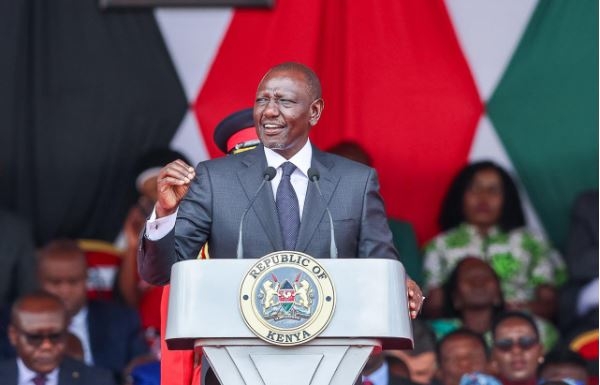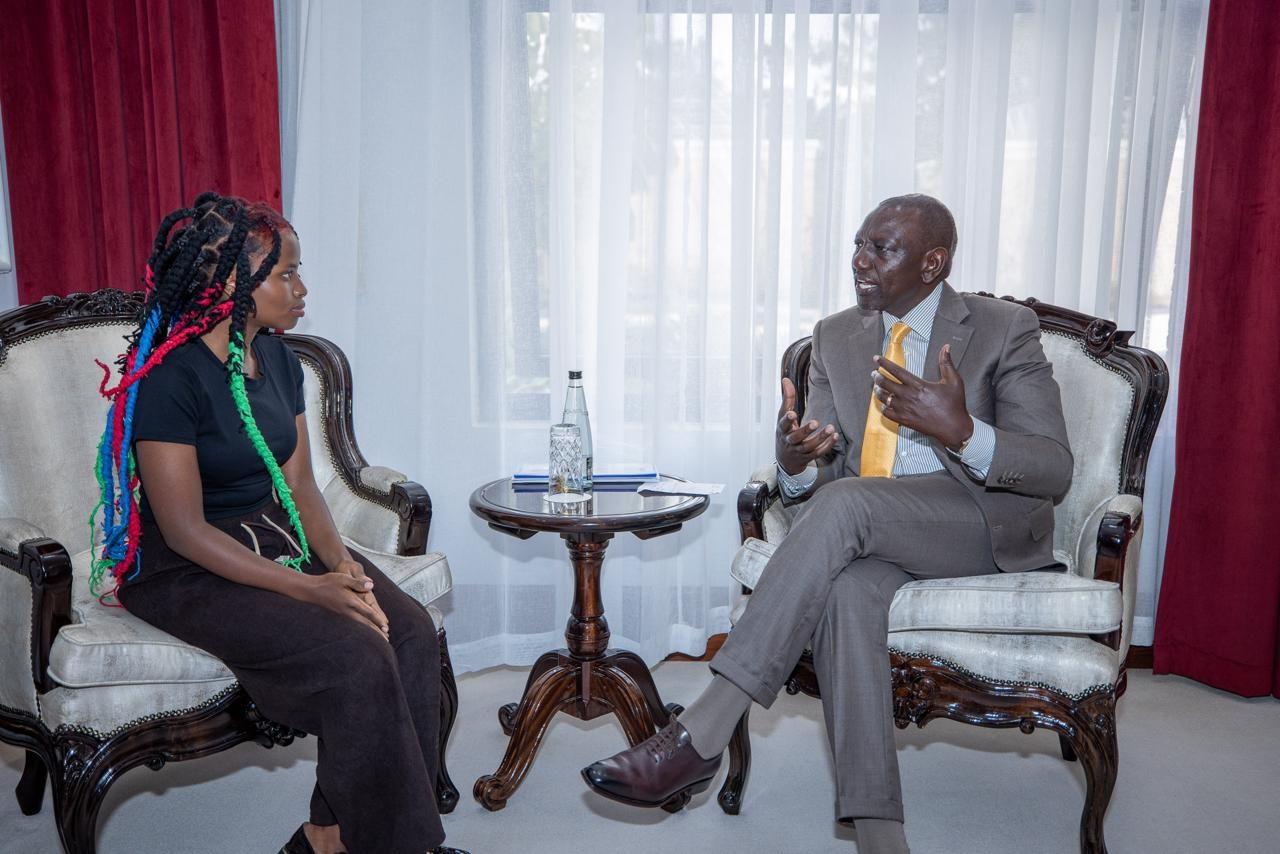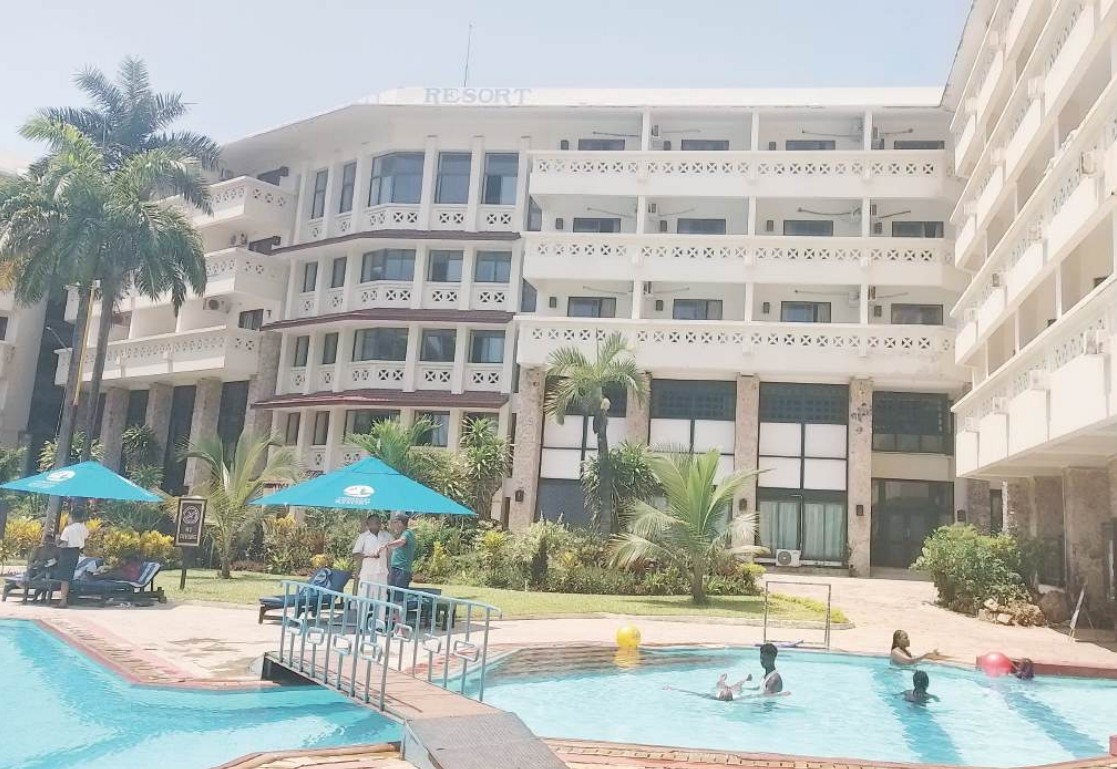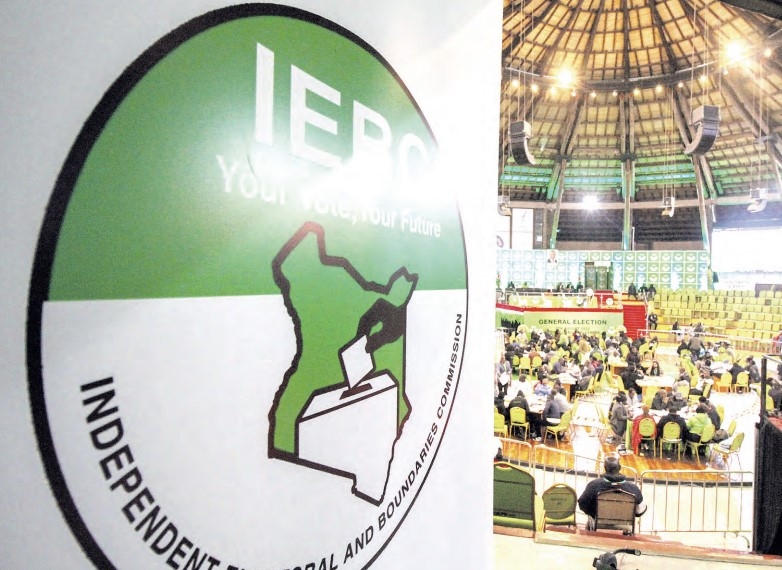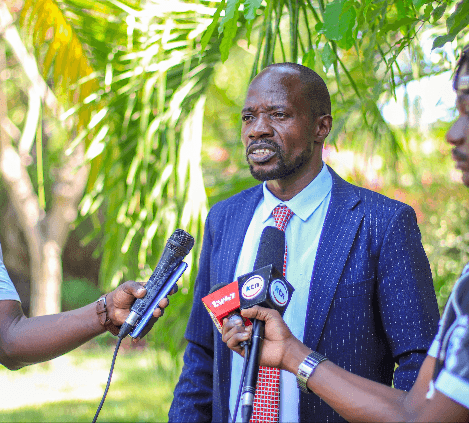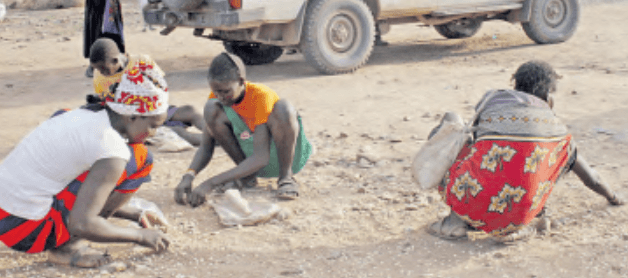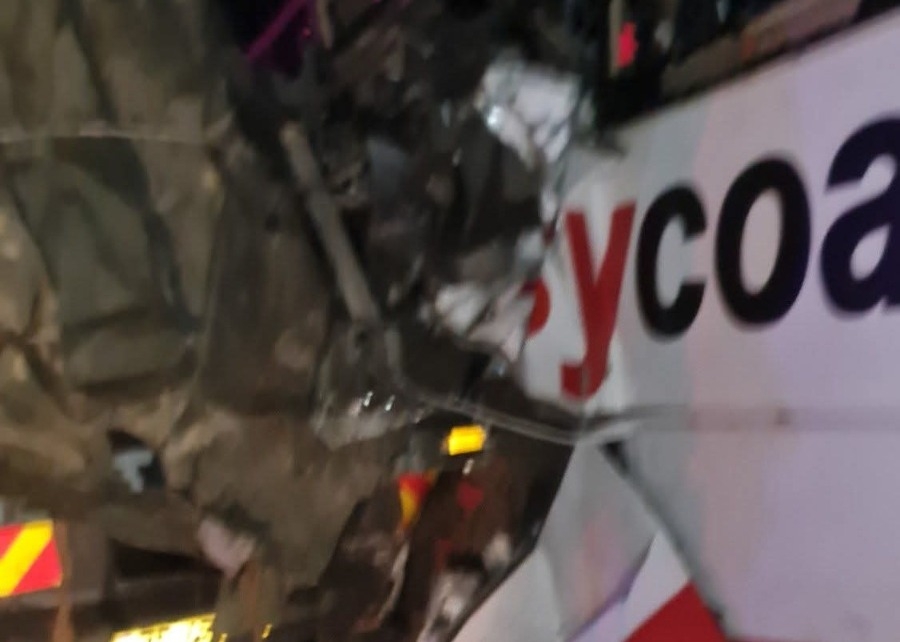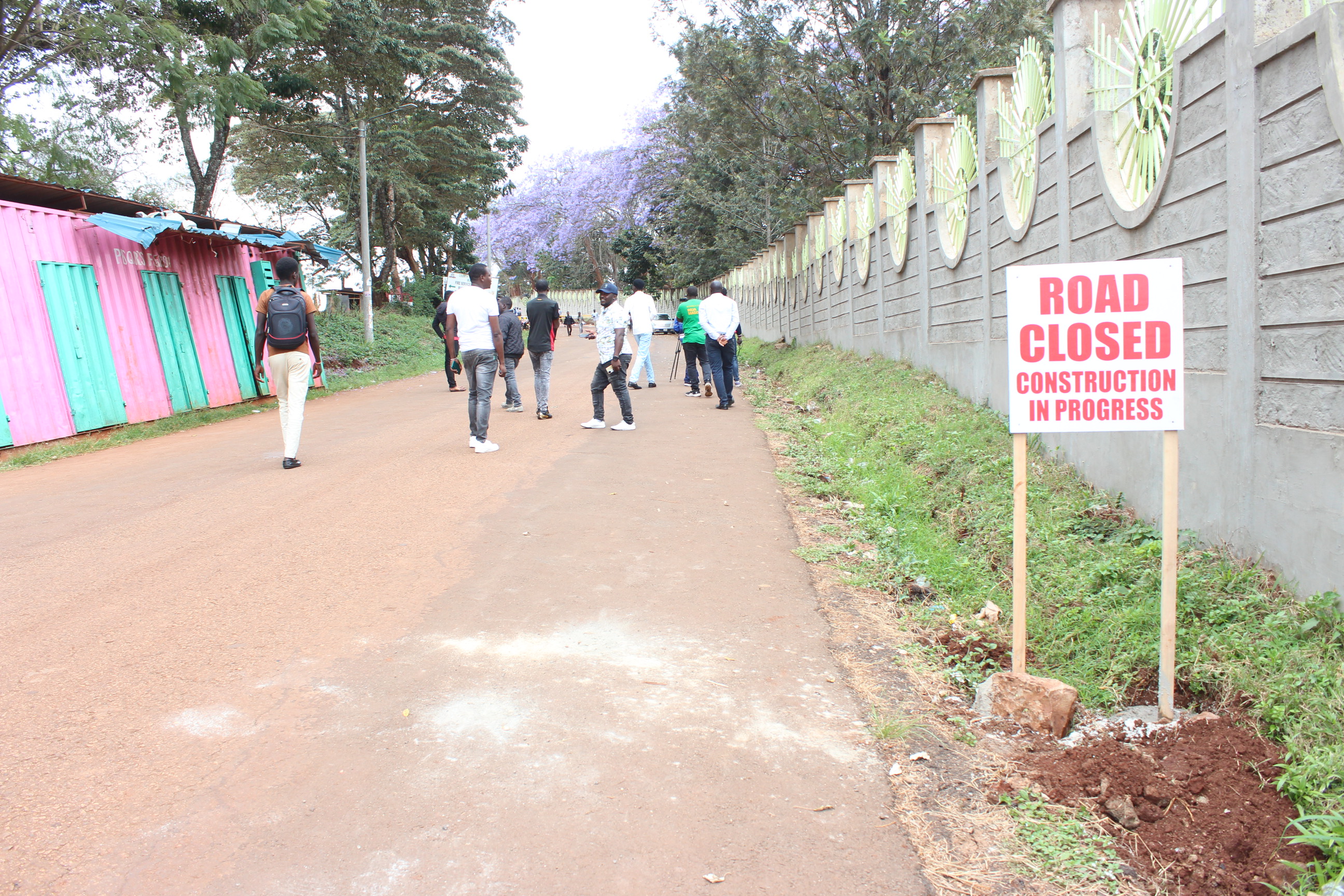 A signpost erected along the Kiharu estate road indicating that the road has been closed for construction/ALICE WAITHERA
A signpost erected along the Kiharu estate road indicating that the road has been closed for construction/ALICE WAITHERAMurang'a University of
Technology and residents of Murang’a town are fighting over the closure of a road passing
through an estate.
A few days ago, residents were shocked to find metallic barriers barring vehicles and motorcycles from passing through the road that connects Murang’a town to Kangema road.
The road that passes through Kiharu estate is also used by
students to access the town, as it’s significantly shorter than another road
from the town to the university’s main gate.
In between barrier points is Kiharu stadium which the
university uses for sports and as the graduation square, and a back entrance to
the university.
On Tuesday, a section of residents threatened to uproot the
barriers, saying they were disrupting their way of life as motorists are
forced to turn while passengers on boda bodas have to alight and cross the
barriers on foot.
Even more frustrating for locals is the university’s failure
to dispatch security guards to man the two barriers.
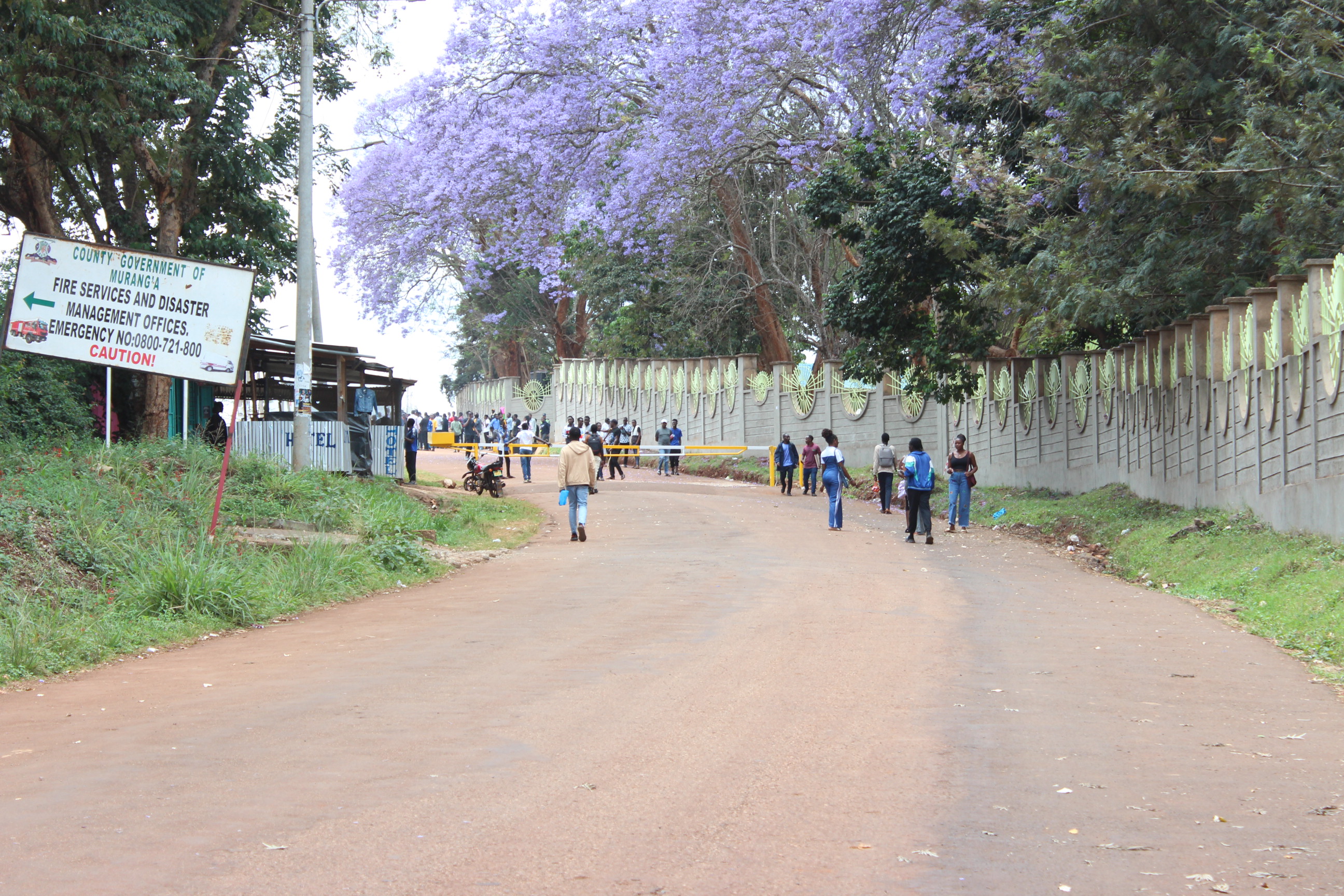 The Murang'a town- Kiharu estate road on which two barriers have been erected by Murang'a University of Technology/ALICE WAITHERA
The Murang'a town- Kiharu estate road on which two barriers have been erected by Murang'a University of Technology/ALICE WAITHERAFrancis Mwangi, a businessman, was shocked when he was turned away by irate students while delivering a consignment of construction materials to the university.
“I did not know this road had been closed. Now, I have to go back to Murang’a town and take the other road to deliver the goods to the university,” he said.
Murathi Magochi, a resident, wondered why the university management took such a drastic step without involving members of the community.
He emphasised the good relationship that has existed between the institution and locals, saying the management should not be seen to make decisions that aggrieve the community that hosts it.
The road, he insisted, is a public facility and was tarmacked long before the institution received its charter in 2016.
Previously, the institution, formerly known as Murang’a College of Technology, was a constituent college of Jomo Kenyatta University of Agriculture and Technology.
“This road absorbs traffic from Kangema road and is crucial
to Murang’a town. I was surprised that even security officers arrived here
wondering what was happening. That was an indication they also had not been
informed,” he said.
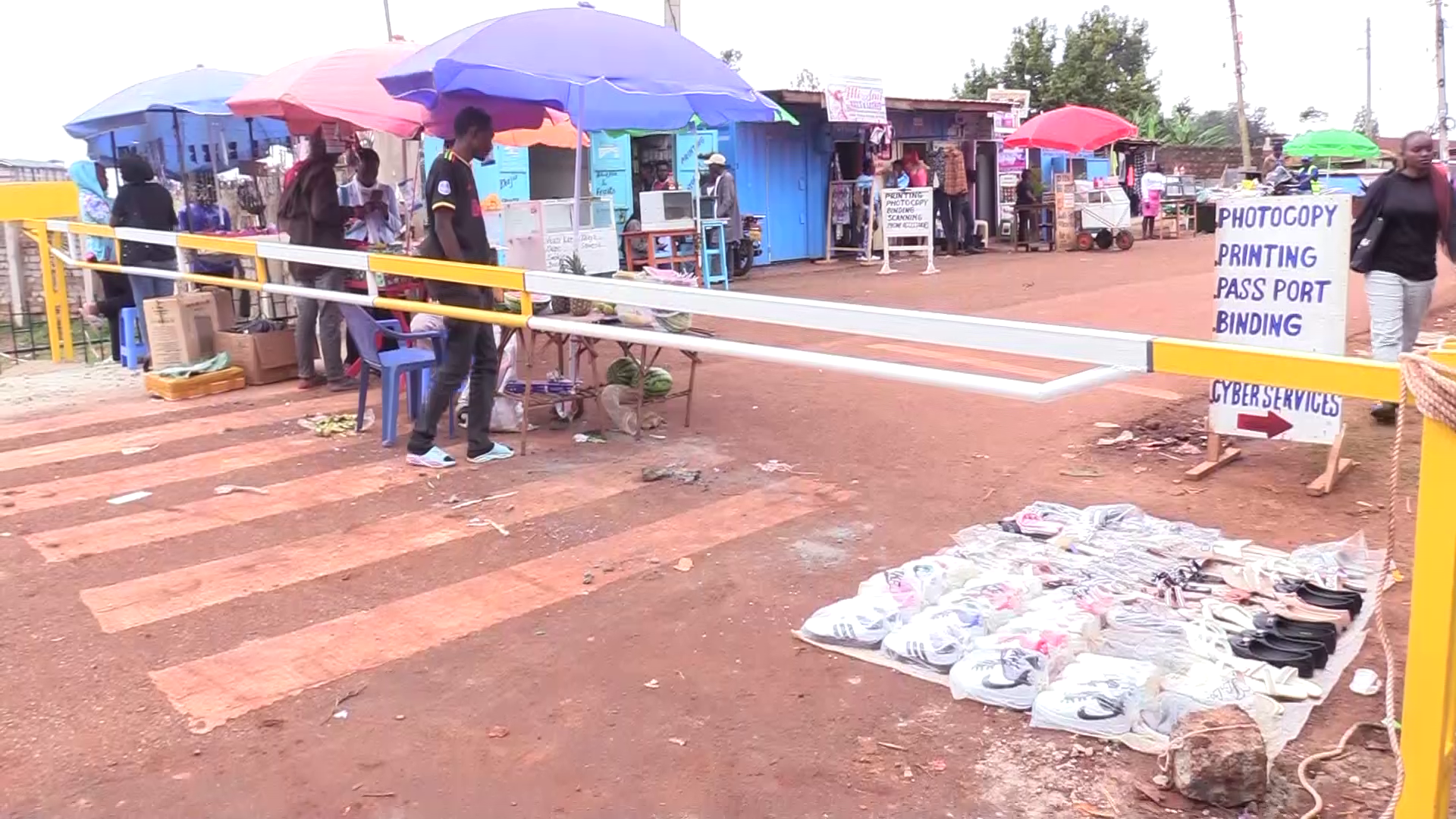 Traders sell wares at one of the two barriers erected along the Murang'a town-Kiharu estate road/ALICE WAITHERA
Traders sell wares at one of the two barriers erected along the Murang'a town-Kiharu estate road/ALICE WAITHERAThe residents expressed their willingness to go to court to block the erection of the barriers should the university not heed to their demands to remove them.
“It’s the local community that lobbied for this university for years. It should not be mistreated,” Magochi said.
Kamau Waithera, another resident, said matters that affect the public should be subjected to public participation before being implemented.
Earlier, the university installed a perimeter wall around Kiharu Stadium which was previously used by the public for sports and other activities.
“We’re not here for protests. We’re here to ask Vice Chancellor Dickson Nyariki to remove these barriers. We know our rights and are prepared to legally fight for them,” Kamau said.
Acting county commissioner Charles Muriithi, who visited the
scene in the company of police officers, pleaded with security officers from the
university to open the barricades and allow vehicles through to no avail.
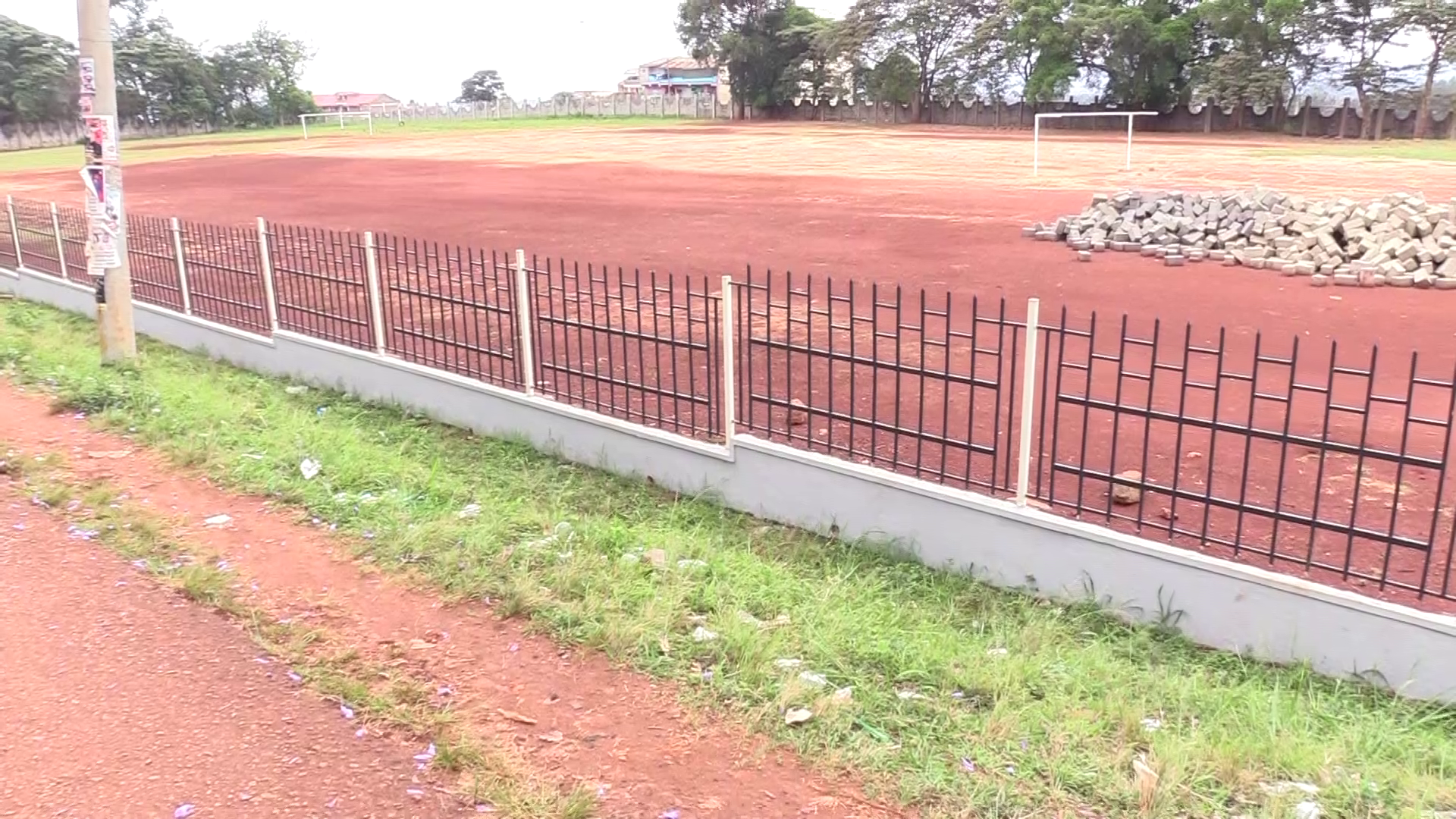 Kiharu stadium that is at the centre of the conflict, as the university claims it closed the road because of ongoing construction at the stadium/ALICE WAITHERA
Kiharu stadium that is at the centre of the conflict, as the university claims it closed the road because of ongoing construction at the stadium/ALICE WAITHERAMeanwhile, irate students blowing vuvuzelas manned one barricade just before the back entrance, hurling stones at residents while insisting that the barriers would remain until further instructions were received from the vice chancellor.
At one point, anti-riot police officers were sent to the scene but Muriithi asked them to leave as he made attempts to calm the students and de-escalate the tension.
Eventually, the university’s chief security officer Felix Kimotho addressed the students after long moments of engaging with security officers, telling them to open the barriers.
Muriithi said the road would remain open pending talks between the university and local leaders on the way forward.
“The issue here is very simple. The university had closed
the road under the pretext that they are undertaking construction in the
stadium so members of the public reacted and informed us. As the county
security committee, we have come here and opened the barriers”.
“They claim that this road passes through the university and they’d like to take it back but this is a public road and this is a public university, so we will have to sit down and resolve this matter”.
But Samuel Nge’the, one of the founding members of the institution in 1973 who later became the college’s deputy principal in 1984, faulted the university for closing the road.
He explained that the stadium where the university claims to be undertaking construction was a public recreational area which it had been allowed to use for its activities.
“It was not for the university specifically. It’s wrong for the management to claim its ownership and block the road”.
Ng’ethe, a member of the Kiama Kia Ma council of elders, said they were shocked as elders to see the university start fencing a parcel that hosts Murang’a fire station and a shrine that they use for their cultural ceremonies.
The parcel, barely 50 metres from one of the barriers, has an unfinished wall that Ng’ethe said was abandoned after they held talks with the university.



